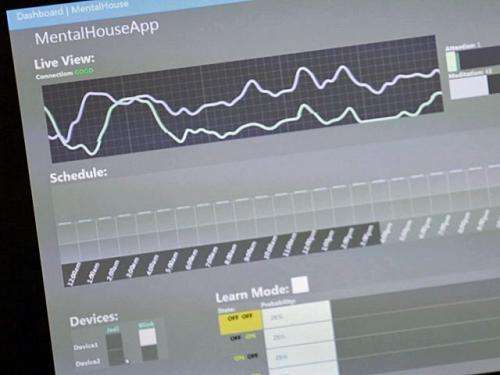New hope for people living with paralysis

When we released the Lab of Things a year ago, we knew that it would benefit researchers experimenting with connected devices in various domains. It has been very gratifying to see how the Lab of Things has helped to accelerate research on helping people with disabilities to live more independent lives.
Essentially, the Lab of Things is a research platform that enables the deployment of connected devices and sensors at scale. By providing a client-side set of components called HomeOS, the Lab of Things frees researchers from having to develop the complete software stack for deploying their experiments. The HomeOS enables a simple yet powerful connectivity and experiment execution environment. The Lab of Things also comes with a set of cloud services for updating, monitoring, and storage, allowing researchers to scale up deployments and deploy in geographically diverse locations. These features lower the barriers for testing new devices and understanding their behavior in a quick, stable, and repeatable fashion.
Researchers have been using the Lab of Things to develop new technologies. Professor Nilanjan Banerjee of the University of Maryland at Baltimore County and I recently had the opportunity to describe some of these exciting new technologies during an online webcast of the 2014 Microsoft Research Faculty Summit.
Professor Banerjee was an early Lab of Things adopter. He approached us shortly after we released it, speaking passionately about developing sensors that could help people with limited mobility lead more independent lives by enabling them to control the environment in their home and workplaces. The Lab of Things and its underlying HomeOS seemed the perfect platform for his project. It would allow him to test his ideas quickly and adapt his design as necessary.
He started working with Buz Chmielewski, who became a quadriplegic after a surfing accident 25 years earlier. Buz helped Professor Banerjee test his design and arrive at a more usable sensor. After nearly a year, Professor Banerjee and his colleagues had developed a sensor that detects gestures and uses them to activate lights and other appliances in the home. The sensor can be sewn almost anything in the environment—for example, clothing or bedding.
The sensor design for this project was developed by Professor Ryan Robucci and his team. With the Lab of Things, Professor Robucci was able to develop and test the sensor components quickly without having to develop the accompanying software. Also part of this project was Dr. Sandy McCombe-Waller from the University of Maryland, School of Medicine, who specializes in rehabilitation of people with various forms of injuries and disabilities. She helped with understanding the various types of mobility issues involved, and with the Lab of Things was able to test various designs of the sensor quickly.
Over the past year, the Lab of Things has also grown in what it offers. Recently we added support for the Arduino hardware prototyping board, opening up the Lab of Things to a whole new world of experimentation with new sensors and devices. The Lab of Things also supports web calls to services such as Weather Underground. All of the apps and drivers are available as sample code for users to adapt.
Provided by Microsoft